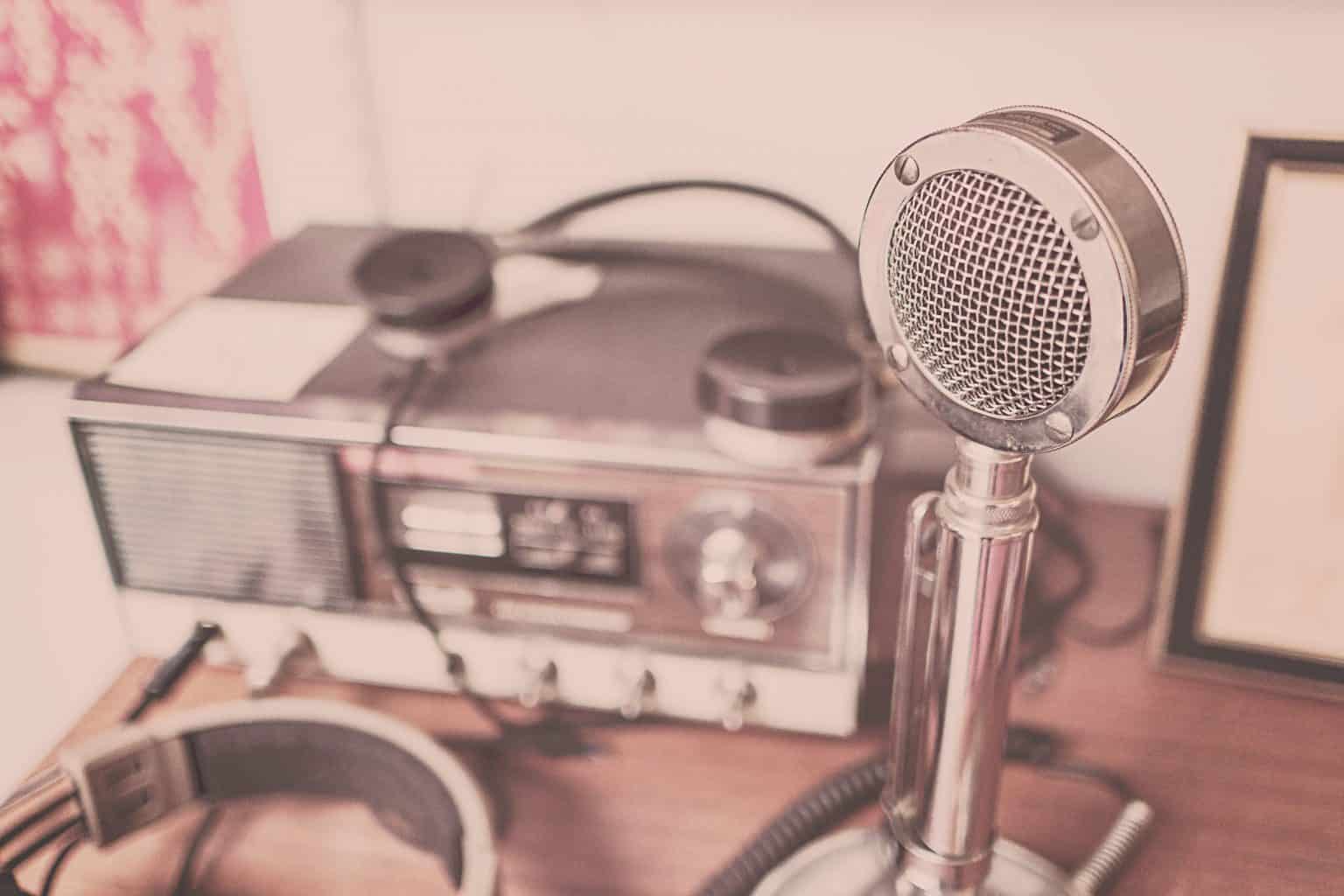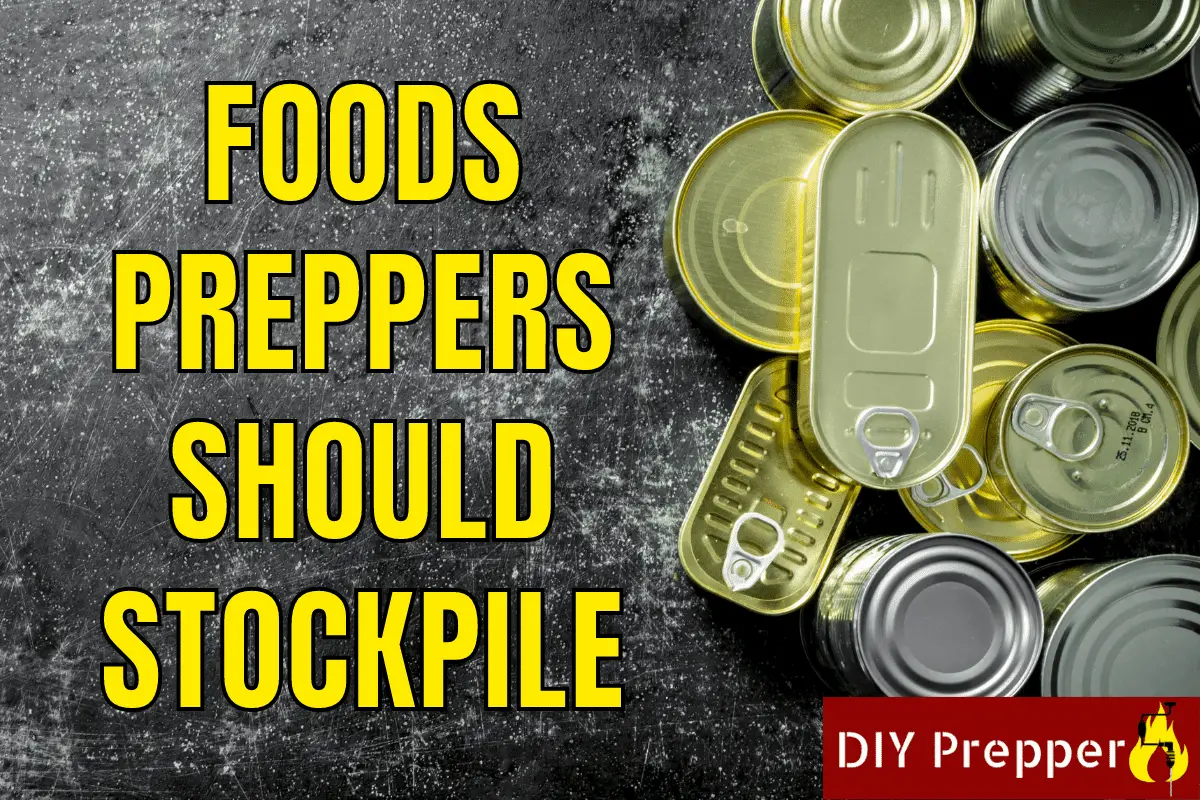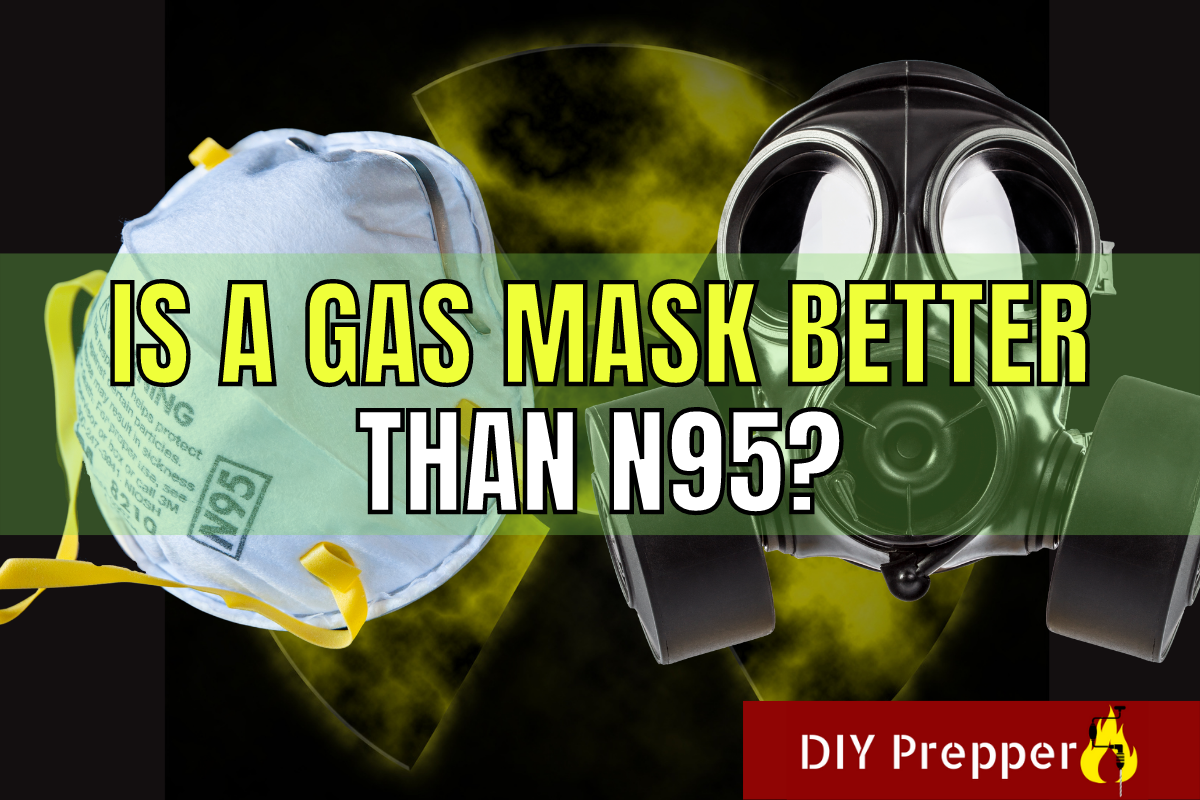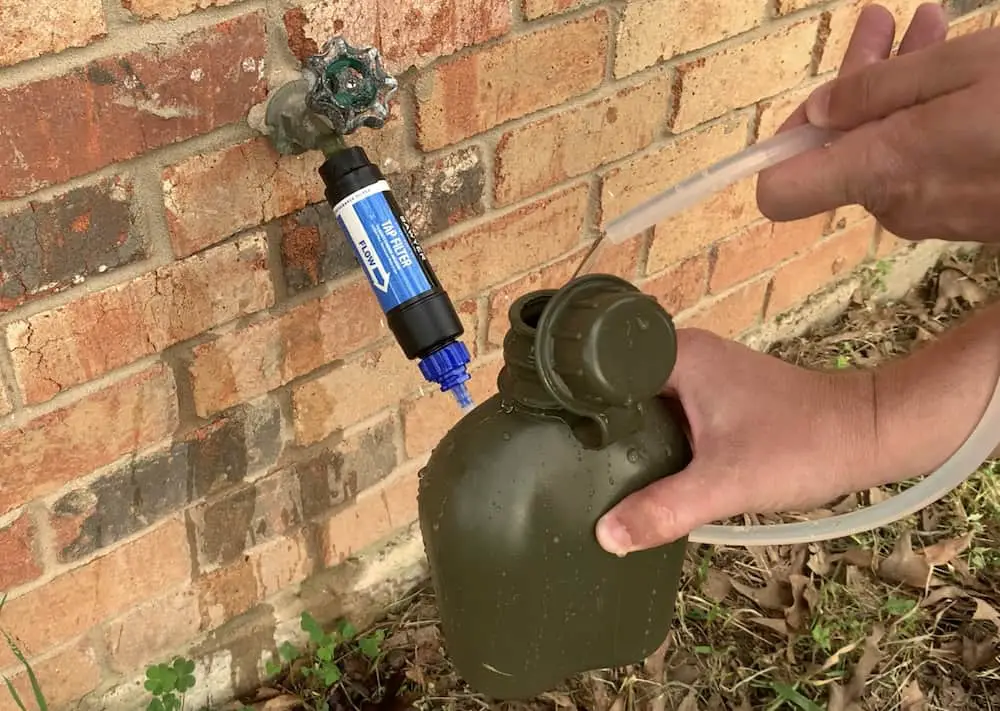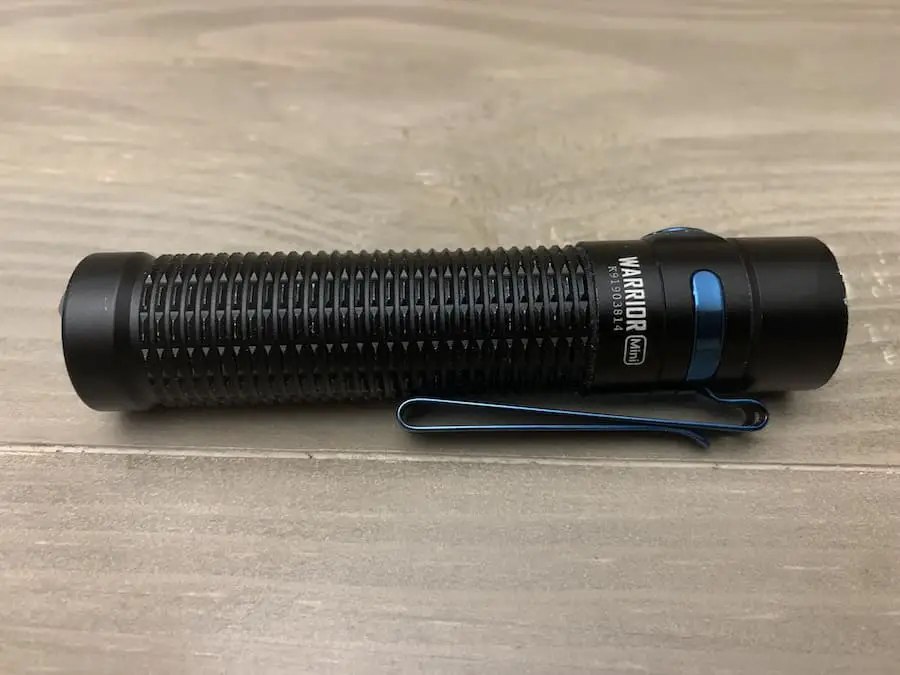Water Storage and Purification
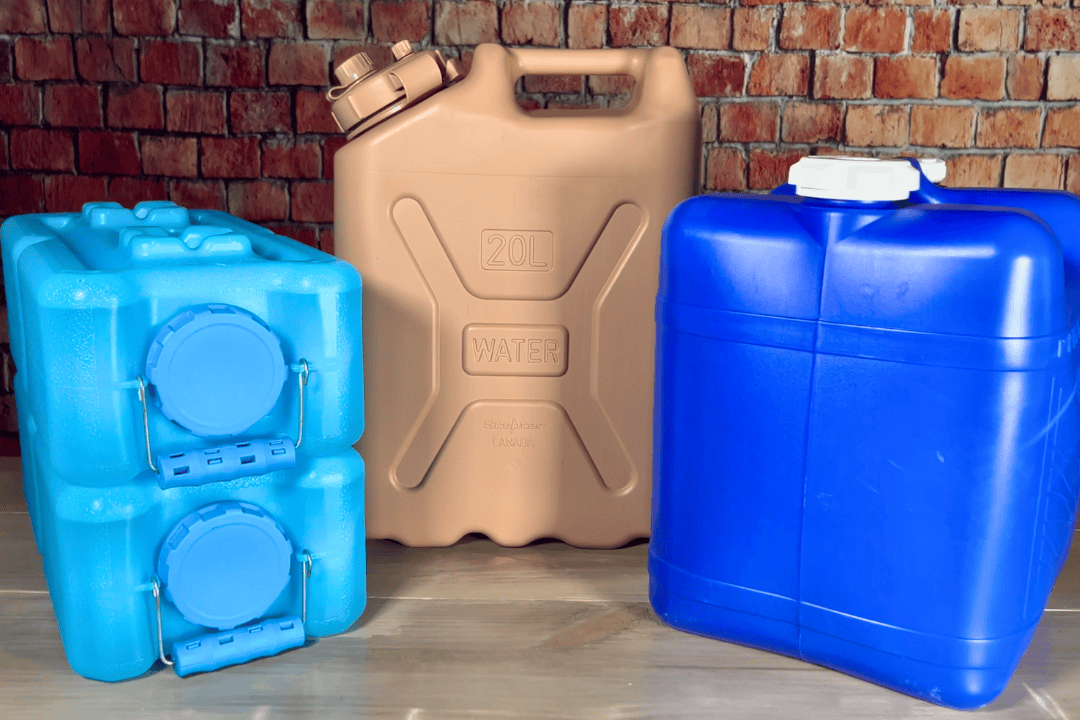
Having clean water is a necessary part of living a healthy life. Unfortunately, access to clean, running water could become compromised during a disaster.
If you find yourself in a situation where you can’t trust what’s coming out of the tap or nothing is coming out, you should be prepared to provide water for yourself and your family. This article covers what you will need to store water at your home and purify it before you drink it.
*IMPORTANT: Go ahead and assume that any link in this article is an affiliate link. That means I’ll receive a small commission if you buy anything on that website.
Water Storage Essentials
Bottled Water
Even though bottled water shouldn’t be a big part of your overall stored water, it’s still good to have some on hand. You will want something you can grab and go, and bottled water fits this need nicely. I recommend having 1-2 weeks of this and rotating through it.
Portable Water Containers
Reliance Aquatainers: These are some of the most cost-effective water storage containers on the market. They hold 7 gallons each and include a spigot. Similar products don’t include one, so it’s a nice addition.
WaterBricks and AquaBricks: WaterBricks and AquaBricks are very similar products, in that they’re designed to hold either water or food and be stacked to save space. Aquabricks are tougher than WaterBricks, but they also cost more. These are a good option if you live somewhere with limited space. They’re also good if you struggle to carry larger containers since they only hold 3 or 3 1/2 gallons of water.
Military Water Cans: These are some of the toughest water containers on the planet. They’re made of heavy-duty plastic and can hold 5 gallons. Their tough construction makes them an excellent choice for vehicle water storage where they may get knocked around.
Collapsible Water Containers: These are an excellent option if you’re short on space. You can store them collapsed most of the time and fill them up if you know something bad is headed your way. While you should always have water available at all times, being able to gather some last-minute water storage is beneficial.
Bulk Water Storage
Aquapod and WaterBOB: These are similar to collapsible water containers but on a much larger scale. The Aquapod and WaterBOB are bathtub liners that serve as hygienic water storage bladders. If you fill them before a boil water notice, the water inside should be safe to drink without treatment for several weeks.
Water Storage Barrels: These are your best bet when you’re ready to have a permanent water stockpile. Water barrels are ideal for storing water in your garage or basement. Barrels can also be integrated into a rainwater catchment system, allowing you to have a renewable long-term water source. When using these, be sure to pick up a hand pump and barrel wrench.
Water Filtration and Purification
The next thing you need is a way to filter and purify water that you obtain from natural sources or a rainwater harvesting system. Your water purification plan should be able to remove bacteria, viruses, chemicals, and debris from your water. Most filters will only remove certain contaminants, so it is best to have a multi-stage purification system in place.
Sawyer Filters
The Sawyer Mini and Sawyer Squeeze are popular since they are lightweight, inexpensive, and high-quality. They can remove contaminants down to 0.1 Microns. This is good enough to remove bacteria, protozoa, sediment, and microplastics. However, these filters will not remove viruses or chemicals.
In my opinion, Sawyer filters are best used as the first stage of a larger water purification system. I use a Sawyer TAP filter attached to a bucket to remove larger contaminants. This will get the water much cleaner before it goes through the other stages of my process. Just note that the TAP filter needs to be primed before use. This will be a challenge if you have already lost water pressure.
Boiling Methods
The next stage of my water purification plan involves boiling water to remove any remaining biological contaminants. What I am primarily concerned with is water-borne viruses. While these aren’t common in developed nations now, that would likely change during a long-term disaster.
Ecozoom Versa Rocket Stove: My favorite long-term solution for boiling water and cooking is a rocket stove. These use natural materials and produce very little smoke once they get going. A full-size rocket stove can boil even large pots of water with no trouble.
Kelly Kettle Base Camp: Another good option for boiling water long-term is a Kelly Kettle. These come in a few different sizes, but if you’ll be boiling water for more than just yourself, buy the larger Basecamp model. These are similar to rocket stoves and rely on natural materials for fuel, however, they’re not well-suited for larger cooking tasks.
Chemical Treatment
You can also use bleach solutions to help you remove biological contaminants from water. However, there are some things that you’ll need to keep in mind. If you are using store-bought bleach, it must be regular disinfecting bleach. Other kinds, like scented and low-splash bleach, have additional chemicals that make them unsuitable for water treatment.
Liquid bleach also has a short shelf life. It will only take around 6 months for it to begin losing effectiveness. If you are concerned about longer-term situations, storing granular calcium hypochlorite is the way to go. It has a longer shelf-life, but it’s also highly corrosive. That can make it a challenge to store. Also, be sure that you are getting plain calcium hypochlorite. Like regular bleach, it comes in different varieties, and many of them have additional chemicals added to them.
Regardless of if you use liquid disinfecting bleach or granular calcium hypochlorite, you must do it properly. You can learn how to use them for emergency water purification from the CDC’s website by clicking here.
Countertop Filter System
A Berkey System is the final stage of my water purification plan. The Black Berkey filtering elements use activated charcoal, among other things, to remove contaminants. My family uses ours daily to improve the quality of our drinking water, and it has been very effective at removing chemicals.
However, I would not recommend using a Berkey filter as a standalone water purification system. In my opinion, there have been too many concerns regarding their certifications to completely put my trust in them.
Even if they are as effective as they claim, having a multi-stage purification system will give you the greatest chance of removing as many contaminants as possible. That would be especially important during a long-term grid-down scenario where many water sources would become contaminated with human waste and other dangerous substances.
Portable Water Purification
Grayl Purifier Bottles: These are your best option if you need a reliable water purification method for a bug-out bag or get-home bag. They are designed to remove bacteria, viruses, and chemicals, and are suitable for urban and backcountry environments.
Water Purification Tablets: Even if you have a good water filter or purifier bottle, it’s also a good idea to have some purification tablets in your kit. This will ensure that all biological contaminants have been removed from your water.
Pathfinder Bottle Cook Set: This is the best all-in-one kit I’ve found. It comes with a stainless steel bottle that you boil water in, a stainless steel camp cup, a stove, and a case to hold everything. It also includes a few extra items, like a ferro rod, cutlery set, fish mouth spreaders, and emergency fire starters.
Alcohol Stove: This is my favorite portable method for boiling water. Alcohol burners are small, lightweight, and compatible with the stove from the bottle cook set. You can also use them with other off-grid cooking methods like the Firebox Stove and Solo Stove Lite. They can use multiple fuels, including denatured alcohol, isopropyl alcohol, and even Everclear.

